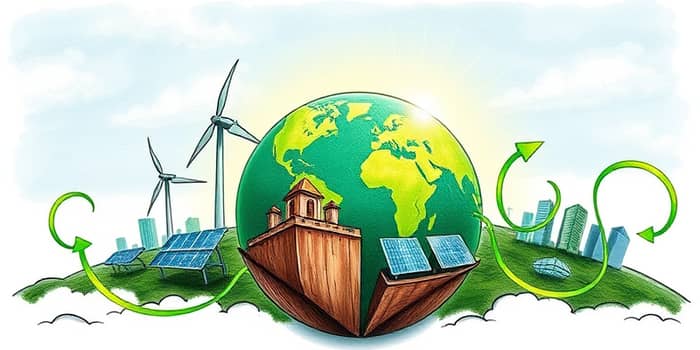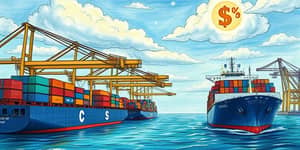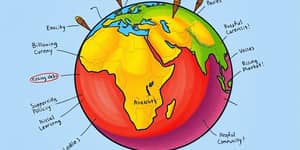
In a world confronting the climate crisis, the fusion of capital and conscience is reshaping economies and driving monumental change. Sustainable finance has emerged as a decisive force, steering trillions of dollars toward environmentally friendly and socially responsible initiatives. As we stand at the threshold of a cleaner, greener future, understanding the mechanics, milestones, and momentum of sustainable finance is crucial for investors, policymakers, and citizens alike.
Sustainable finance integrates environmental, social, and governance considerations into every stage of investment, from risk assessment to capital allocation. It ensures that financial flows support a low-carbon, climate-resilient future aligned with the Paris Agreement and the UN Sustainable Development Goals.
Within this broad umbrella, two pillars stand out:
Global markets are witnessing an unprecedented surge in sustainable finance. In 2024, the global sustainable debt market swelled to $1.6 trillion in supply, reflecting an 8% increase year-on-year. Meanwhile, sustainable bond issuance is projected to hit $1 trillion in 2025, cementing the asset class as a mainstream investment category.
The cumulative assets under management with an ESG mandate soared to $3.2 trillion by 2024, demonstrating investors’ growing appetite for purpose-driven portfolios. Public-sector commitment is equally robust, with the US federal government channeling $99 billion into energy transition sectors from 2021 to 2024.
Renewable energy deployment is accelerating rapidly, driven by cost declines and robust financing. Solar PV installations surged 35% in 2024, with the US adding a record 39.6 GW of utility-scale solar. Globally, wind capacity rose by 5%, despite permitting challenges outside Asia-Pacific. Energy storage deployments soared 76% by megawatt-hour, and electric vehicle sales climbed 26% worldwide.
The year also saw an estimated 600 GW of new solar and 125 GW of new wind capacity added, with battery storage capacity nearly doubling to 50 GW. As clean technologies become ever more competitive—solar modules cost just $0.09/W and EV batteries fell below $100/kWh—the pathway to large-scale decarbonization becomes clearer.
Strong policy frameworks are the bedrock of sustainable finance. In Europe, the Corporate Sustainability Reporting Directive mandates rigorous disclosure, while California’s climate laws set ambitious state-level targets. Although US federal ESG policy faces political headwinds, the SEC’s tightening of disclosure rules is elevating transparency across markets.
Internationally, the Paris Agreement’s goal of a 55% reduction in greenhouse gases by 2030 guides capital allocation. Yet, concerns about greenwashing and vague standards persist, prompting calls for uniform, enforceable regulations to safeguard market integrity and public trust.
Green banks are pivotal in overcoming barriers to private investment in climate solutions. By offering de-risking mechanisms, technical assistance, and credit enhancements, they catalyze funds for projects often deemed too risky by conventional lenders.
In emerging markets and developing economies, green facilities within national development banks have unlocked new streams of capital, addressing local constraints and tailoring solutions to unique regional needs.
Europe continues to lead, thanks to comprehensive regulatory frameworks and a large share of sustainable debt. North America displays strong federal and state initiatives, though ESG policy battles create uncertainty. In Asia-Pacific, China dominates renewable energy installations, while permitting bottlenecks slow wind growth in other markets.
Growth markets such as Australia, Japan, and EMEA (Europe, Middle East, and Africa) are emerging as new ESG financing hubs, illustrating how diverse regions contribute unique strengths to the global green finance ecosystem.
Despite impressive progress, challenges remain. Decarbonization ambitions often outpace actual implementation, with permitting delays, grid interconnection bottlenecks, and political pushback slowing project delivery. Tackling implementation gaps and regulatory misalignments is critical to sustain momentum.
Looking toward 2025 and beyond, the trajectory of sustainable finance is upward. Key focus areas include:
By combining robust policy frameworks, innovative financing models, and global collaboration, sustainable finance is poised to accelerate the green transition, transforming economies and safeguarding the planet for future generations.
References













